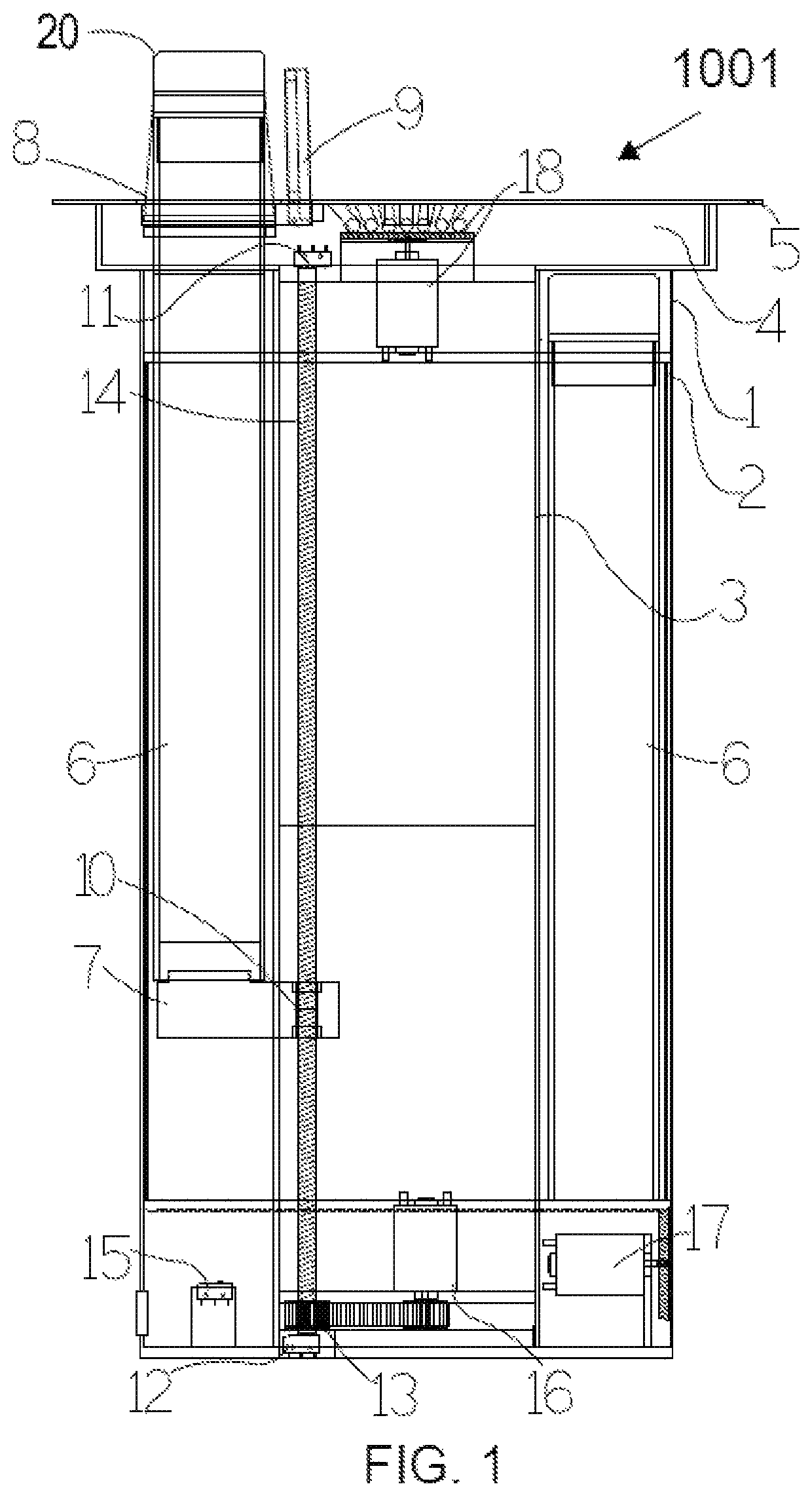Pop up electrical apparatus
a technology of electrical equipment and pop-up, which is applied in the direction of charging stations, coupling device connections, transportation and packaging, etc., can solve the problems of increasing equipment failure, increasing maintenance costs, and initial purchase price, and robots can be exposed to accidental damage, difficult and impractical,
- Summary
- Abstract
- Description
- Claims
- Application Information
AI Technical Summary
Benefits of technology
Problems solved by technology
Method used
Image
Examples
Embodiment Construction
[0030]Referring now to the drawings wherein the showings are for purposes of illustrating embodiments of the article only and not for purposes of limiting the same, and wherein like reference numerals are understood to refer to like components:
[0031]The principal objective of the present invention is to provide a more convenient method and apparatus for charging an electric vehicle that is automated, simple, reliable and inexpensive. The present invention compensates for misalignment between the primary and secondary connectors and maintains sufficient force between the connectors to keep the connectors securely connected throughout a charge cycle, while removing the driver from the job of plugging in the connector. Construction of the present invention is accomplished by means of commonly used materials and methods used in construction of such devices.
[0032]According to the present invention, an exemplary embodiment includes two principal assemblies: a primary connector 1001, as pa...
PUM
 Login to View More
Login to View More Abstract
Description
Claims
Application Information
 Login to View More
Login to View More - R&D
- Intellectual Property
- Life Sciences
- Materials
- Tech Scout
- Unparalleled Data Quality
- Higher Quality Content
- 60% Fewer Hallucinations
Browse by: Latest US Patents, China's latest patents, Technical Efficacy Thesaurus, Application Domain, Technology Topic, Popular Technical Reports.
© 2025 PatSnap. All rights reserved.Legal|Privacy policy|Modern Slavery Act Transparency Statement|Sitemap|About US| Contact US: help@patsnap.com



